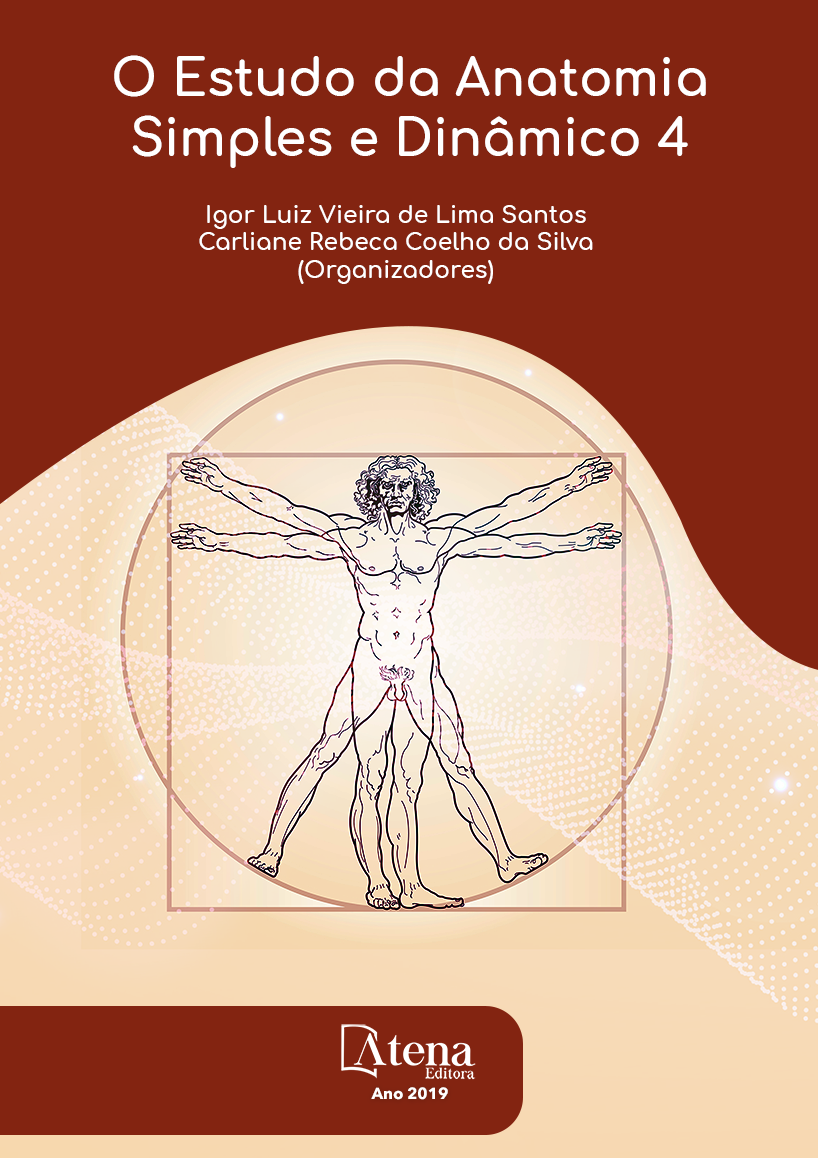
RIM EM FERRADURA E SUAS POSSÍVEIS COMPLICAÇÕES PARA O PORTADOR: UMA REVISÃO DA LITERATURA
O rim em forma de ferradura é uma
anomalia de fusão em que as duas massas
renais são ligadas por parênquima ou por um
istmo fibroso nos seus polos, sendo o de maior
frequência o inferior, sendo a anomalia mais
comum de fusão renal. Apesar de assintomáticos,
tem sido relatada uma associação com o
desenvolvimento de outras anomalias do trato
urinário. O Objetivo do presente artigo consistiu
em analisar as complicações secundárias ao
portador de rim em ferradura. Foi realizada
uma revisão literária nas bases de dados
LILACS, SCIELO e PUBMED, apresentando
como critérios para seleção artigos nos idiomas
inglês e português, registrados entre 2012 e
2017 nas áreas temáticas de ciências da saúde
com limite em estudos em humanos através
dos descritores: fused kidney. Nefrolitíase.
Anormalidade congênita. Sendo obtidos 295
artigos para seleção através de 3 etapas, a
exclusão de artigos repetidos, a análise dos
títulos e o estudo dos resumos. Após essas
etapas 15 artigos responderam aos objetivos
da pesquisa. Dentre os artigos analisados foi
observado que a nefrolitíase é a mais comum
de todas as complicações, seguida da infecção urinária que é o segundo sintoma que
mais leva os pacientes a procurarem atendimento médico. Nas buscas observa-se
que esse transtorno, limita- se assim a avaliação sobre essas sintomatologias para os
portadores do rim em ferradura, pela pouca disponibilidade de estudos que focalizam
nesse tema. Contudo, havendo coerência na conclusão da Nefrolitíase e das infecções
gênito-urinárias se apresentarem como as complicações mais frequentes.
RIM EM FERRADURA E SUAS POSSÍVEIS COMPLICAÇÕES PARA O PORTADOR: UMA REVISÃO DA LITERATURA
-
DOI: 10.22533/at.ed.44719250930
-
Palavras-chave: fused kidney; Nefrolitíase; Anormalidade congênita
-
Keywords: fused kidney; Nephrolithiasis; Congenital abnormality
-
Abstract:
The horseshoe-shaped kidney is a fusion anomaly in which the two renal
masses are bound by a parenchyma or by a fibrous isthmus in their poles, the most
frequent being the inferior, and the most common anomaly of renal fusion. Although
asymptomatic, an association with the development of other urinary tract anomalies has
been reported. The objective of this article was to analyze the secondary complications
of horseshoe kidney patients. A literary review was performed in the LILACS, SCIELO
and PUBMED databases, presenting as criteria for selection articles in English and
Portuguese, registered between 2012 and 2017 in the thematic areas of health sciences
with limit in human studies through the descriptors: fused kidney. Nephrolithiasis.
Congenital abnormality. 295 articles were obtained for selection through 3 stages, the
exclusion of repeated articles, the analysis of titles and the study of abstracts. After
these steps, 15 articles answered the research objectives. Among the articles analyzed
it was observed that nephrolithiasis is the most common of all complications, followed
by urinary infection, which is the second symptom that most leads patients to seek
medical attention. In the searches it is observed that this disorder is thus limited the
evaluation of these symptoms for horseshoe kidney patients, by the limited availability
of studies that focus on this theme. However, there is consistency in the conclusion of
Nephrolithiasis and genito-urinary infections as the most frequent complications.
-
Número de páginas: 15
- Arthur de Sousa Lima Carvalho
- Hiago Carvalho Montenegro
- Bruna Monara Rocha Ferreira
- Francisco José Ferreira Filho
- Pedro Lucas de Oliveira Pinheiro
- Ana Priscila Franca Correia
- Fernanda Lucena Belém
- Lucas Araújo de Castro Santana
- Larissa Dantas Magalhães
- Nargylla Bezerra de Lima
- Isabelle Cristina Leite Macêdo
- Lisandra Ianara Linhares Ferreira


